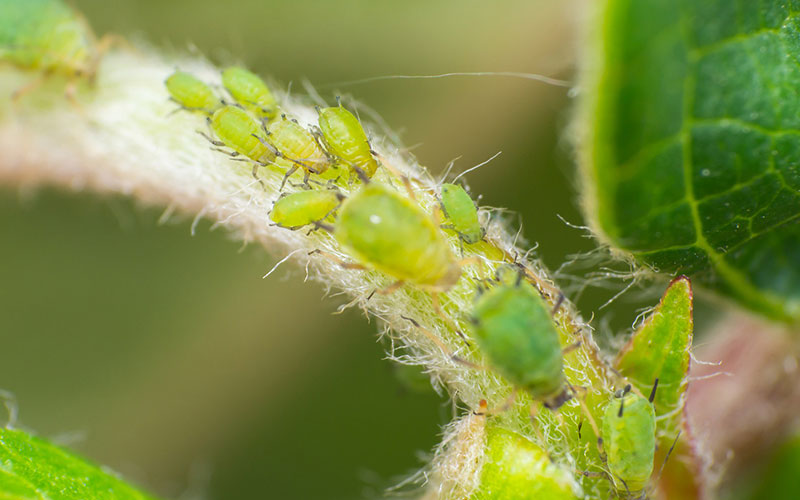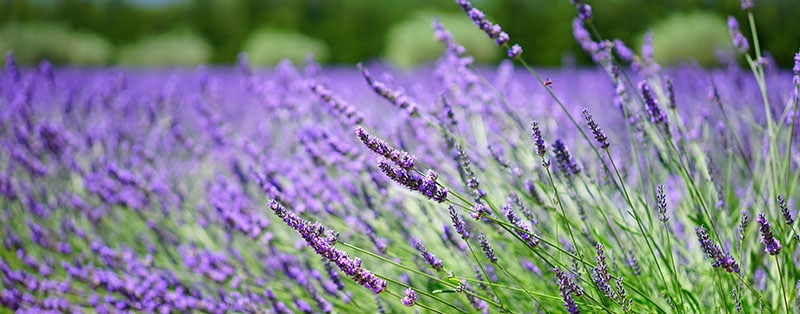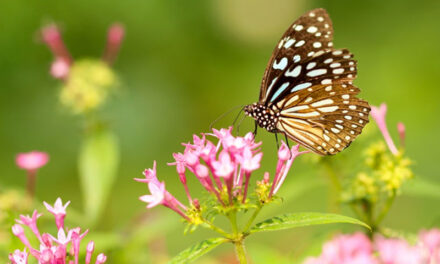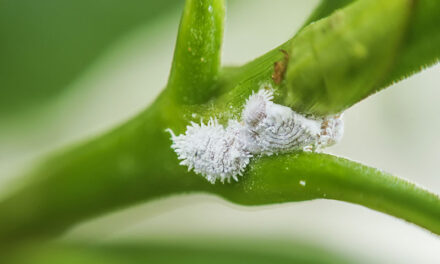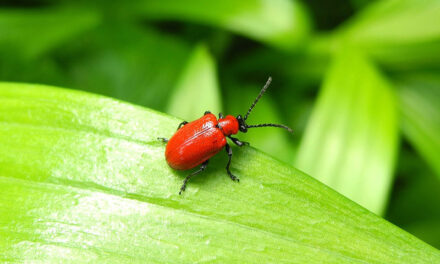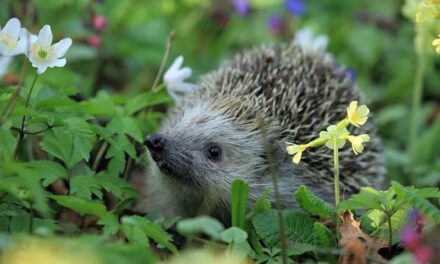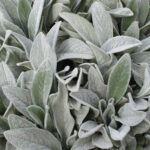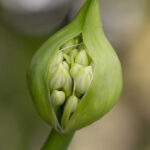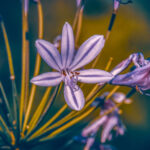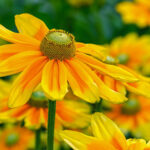In my garden there is a beautiful plant, well, beautiful, it was beautiful, but now it doesn’t look like much anymore. The leaves are drooping, and turning brown, and it doesn’t seem to grow anymore. When I observed it more closely it turned out that it was full of aphids! Gross. I immediately started my research on how to remove these bugs as quickly and effectively as possible.
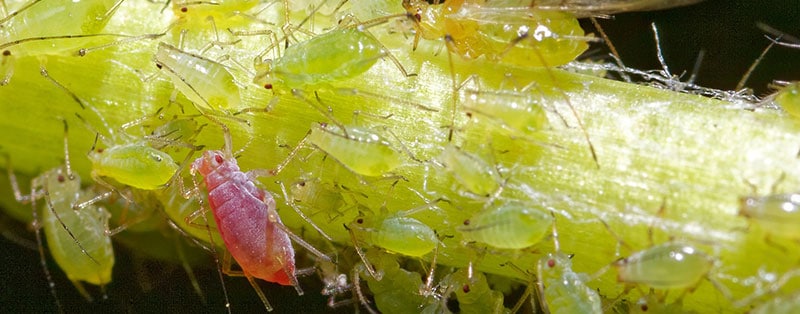
What do aphids look like?
Well, how does such an aphid look like? You really can’t miss them, because they seem like real close-knit group animals, you never have just one, but always a complete invasion. Aphids come in all kinds of colors, there are white aphids, black, yellow, red, and even purple ones. The aphid’s body is soft and about five to seven millimeters long. The aphid is shaped like a pear. In the abdomen there are two tube-like protrusions, from these so-called siphons a liquid, honeydew, can be separated. The females are about twice the size and fatter than the males and usually a bit brighter in color.
Do you, on second thought, don’t think your plant suffers from aphids? It might be suffering from mealybugs or spider mites, these pests look alike at first glance.
Different types
There are actually too many types of aphids to list. Below I list the most common aphids for you.
Black aphid
The black bean aphid is black in color and can be winged or wingless. This bean aphid is two to three millimeters in size and broadly oval in shape. In winter you often see this greenfly on the Guelder rose or the Cardinal’s hat. In the summer he likes to move to varieties of beans and sugar beet. Summer flowers and shrubs can also be affected by this black aphid.
Green peach aphid
The green peach aphid is one to three millimeters in size and is a fan of vegetables. Contrary to what the name suggests, this greenfly is not always green. They come in the colors white-green, light yellow, gray-green, pink, and red. This aphid likes to overwinter on the peach. If there is no peach available, he will settle for bird cherry. In summer, they move to summer plants such as potato, cabbage, sugar beet, and cut flowers.
Cotton aphid
The cotton aphid likes warmth. You usually do not suffer from this greenfly outside that much, but in greenhouses all the more. There it can become a real plague. The cotton aphid is light yellow to light green or black-green and is a maximum of two millimeters in size. They have red eyes and short antennae.
Potato aphid
This greenfly occurs on many crops such as tomato, rose, potato, and lettuce. The potato aphid is four millimeters long and pink or green in color. It hibernates as an egg or, if it is warm enough, such as in a greenhouse, as an adult greenfly.
How to get rid of aphids
Aphids can be a real pest, especially in the spring. They do significant damage in your garden and also spread easily between plants. Aphids absorb plant juices and thereby extract nutrients from your plant. As a result, the plant grows less healthy and the leaves become ugly and dry. The greenfly also secretes honeydew, which makes leaves and fruits sticky. If you see a greenfly, it is important to tackle it immediately, because the longer you wait, the greater the infestation and the uglier your plants.
Aphid spray
There are many anti-aphid sprays on the market. In general, a spray is a contact product. You spray the plant on which you have observed the lice fanatically, make sure you hit all insects thoroughly. Both the top and bottom of the leaf and the trunk or stem must be completely moist. After the treatment, you wait seven days and if necessary, repeat the treatment.
Biological control
Of course, it is also possible to control aphids biologically. The aphid has many natural enemies, such as the ladybug, parasitic wasps, gall midges, lacewings, and hoverflies. Earwigs are also fond of aphids, you can use these to get rid of your greenflies.
In addition to these enemies, the aphids do not like strongly scented plants. So plant lavender, savory, garlic, or marigolds next to your infested plant and the aphids will go away.
Home remedy for aphids
In addition to spray and biological control, there are many home remedies effective against aphids.
Natural aphid spray vinegar
Make a mixture of water and vinegar and put this in a plant sprayer. Spray the affected plant thoroughly, both the bottom and top of the leaves. Repeat this method twice a week until the aphid is gone. The upside of this method is that it’s very natural and that you don’t damage your plant. After all, he already suffered enough from that annoying greenfly.
Fight aphids with methylated spirits
A similar control tip is to fight with methylated spirits. Make a mixture of one liter of water and one liter of methylated spirits and put this in a plant sprayer. Spray your plants carefully again and repeat the treatment until you get rid of the aphids.
Soap spray for aphids
Fill your plant sprayer with water and add a splash of dish soap. Preferably natural dish soap. Shake the plant sprayer thoroughly and then spray your affected plant properly. Spray especially the downsides of the leaves, stems, and petioles well. Repeat this treatment until all aphids have disappeared.
Aphid green soap
Are your aphids stubborn and have you tried everything? Add a little bit of green soap to your mixture of water and vinegar or water and methylated spirits. One to two percent is enough, otherwise, it can be harmful to other insects. And repeat the treatment.
Prevent aphids
As I wrote in the paragraph about biological control, aphids do not like strongly scented plants. For example, plant lavender here and there in your garden preventively and you are a lot less susceptible to aphids. Besides, it is also very beautiful, those lavender plants.
A ladybug box is another way to prevent an aphid infestation in your garden. The more natural enemies that live in your garden, the less aphids have the chance to become a real pest.
Favorite garden plants of the aphid
Some treatment methods are more suitable for one plant than another.
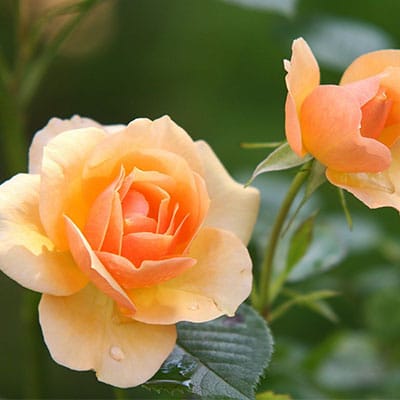
Roses
You wouldn’t say it, but the rose is resistant to various methods. First, try to remove the aphid with a cold water shower. If this doesn’t help, start with water and detergent, water and vinegar, or water and methylated spirits. Spray this mixture over your roses without concerns. It is not harmful to your roses.
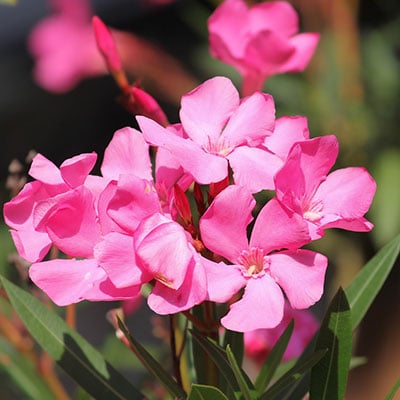
Oleander
Yellow aphids (also called oleander aphids) are especially fond of oleander. Do you see the louse on your Oleander? Then act quickly. Make a mixture of water and dish soap or water and 2% green soap and spray this carefully all over your Oleander. Repeat until you are rid of the aphid.
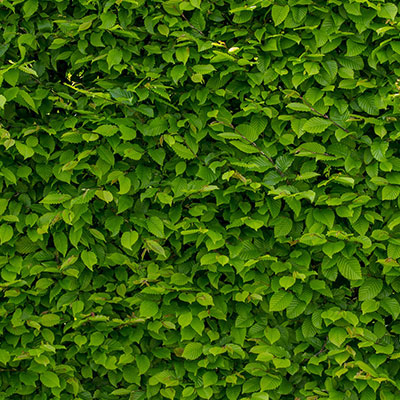
Hedge
It is very time-consuming to treat every nook and cranny of your hedge with a home remedy using your plant spray. First, try to remove the aphid with a strong jet of water. Repeat this treatment until all aphids are gone. Do you suffer from stubborn greenflies? You can also add suds in most pressure washers. Add a splash of dishwater liquid and spray your hedge thoroughly (in the lowest setting) again.
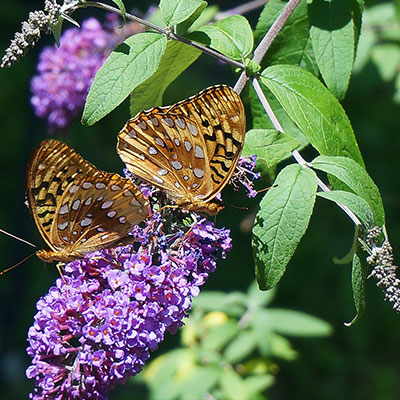
Butterfly bush
Especially the young sprouts of the butterfly bush can suffer from aphids. Treat your butterfly bush with an aphid spray or with one of the home remedies to get rid of your greenflies quickly.
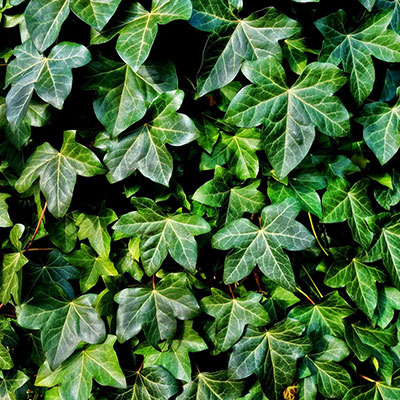
Ivy
Greenflies in your ivy are easy to treat. First, spray the lice off your ivy with a strong jet of water. Then you can begin another treatment with water and methylated spirits, this is not harmful to the ivy or other plants around your ivy.
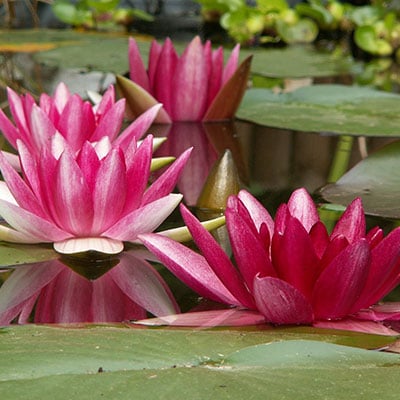
Water lily
The water lily is less easy to treat because many products are not suitable for pond life. The best way is to spray the lice off your water lily with a powerful water jet. You will have to repeat this treatment a few times, as the aphids sometimes manage to climb back on your water lily after being sprayed off. Another option is to put weights on your plant so that it is, temporarily, underwater. Leave the plant underwater for a day and then bring it back up. You will see that no more lice are hopping around on your water lily.

